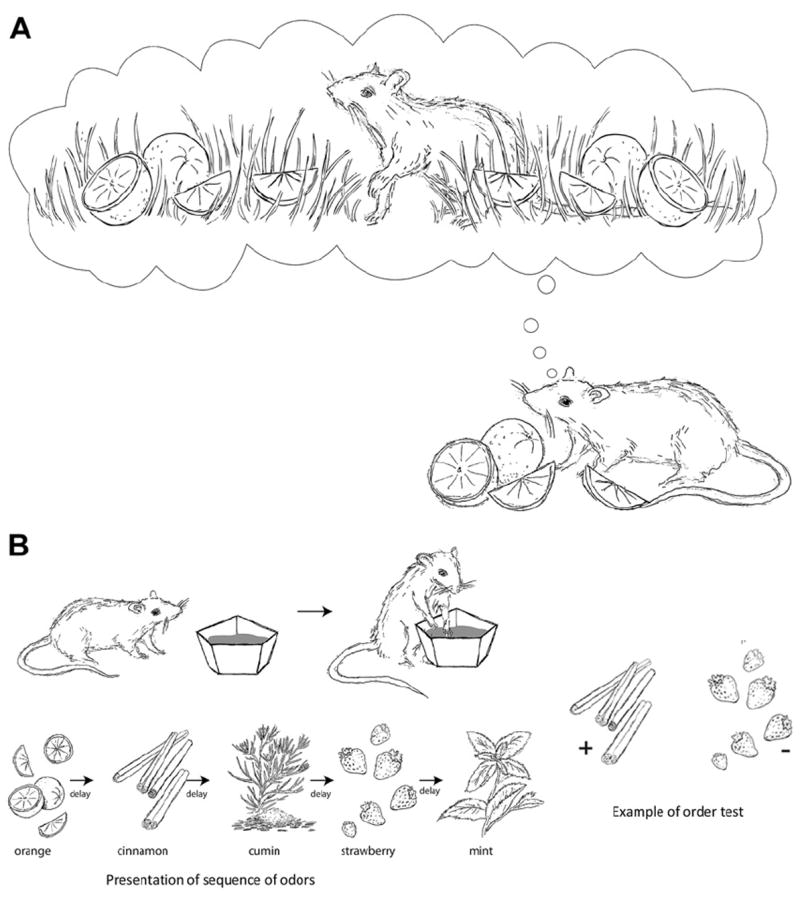Fig. 2.

(A) One general approach for paradigms that aim to evaluate episodic memory is that animals demonstrate episodic memory capacity by remembering specific events as well as the spatial context in which they occurred. The image shows the principle underlying cognitive demands involved in spatial episodic memory tasks, which is to remember the association between presentation of a specific stimulus (oranges) and the specific environment (grass) in which it occurred. (B) Memory for events in their temporal context: In each trial, rats are presented with a series of odors, following which the animal is probed for its memory of the order of elements in the series. The stimulus (odor) associated with reward in the retention phase is the stimulus that was presented first in the sample phase.
